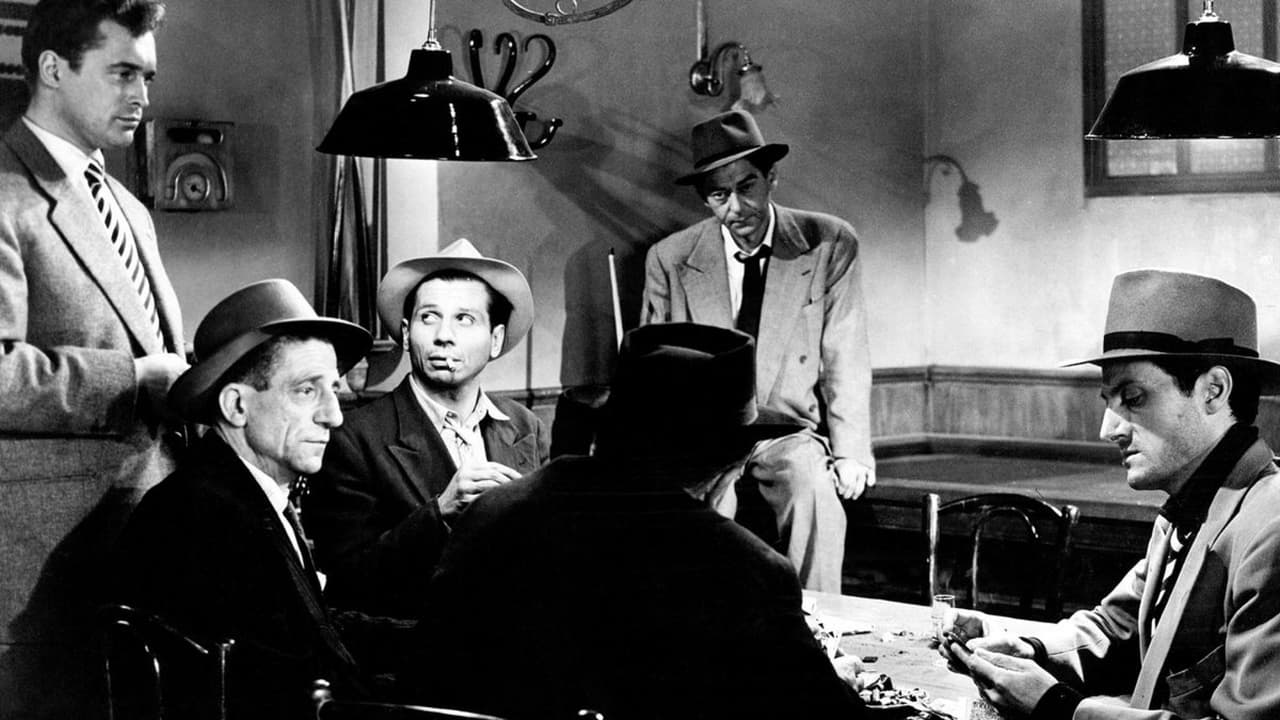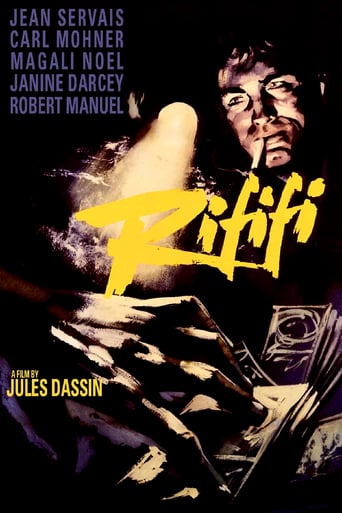

Highly Overrated But Still Good
... View MoreGood concept, poorly executed.
... View MoreBrilliant and touching
... View MoreThere are moments that feel comical, some horrific, and some downright inspiring but the tonal shifts hardly matter as the end results come to a film that's perfect for this time.
... View MoreRififi is a classic heist film that is right up there with the best of its peers - The Asphalt Jungle and The Killing. Yet in many ways it feels like it is overlooked. This is a great film worthy of inclusion not only with the best heist films but with the best noir films. The film is directed by Jules Dassin. Dassin brought us other classic noir films including Brute Force, The Naked City, Thieves Highway and the brilliant Night and the City. Dassin was also blacklisted and went to Europe where he successfully revived his career. Of his later caper films Topkapi stands out. The actual heist done in complete silence, not even any music, is classic. Subtitles.
... View MoreThe novelty message of this film is that there is nothing really wrong, or in any way seriously deviant, in organizing a professionally planned and carefully executed burglary. Let us be reasonable. Men with obligations are required to earn their living, and to look after their loved ones. Who could want to meet a more everyday family man than Jo the Swede, with his regular wife and little cowboy ? Then there are the bad guys. Mafia-type crazy drug addicts, who'll do anything for a fix, slit throats, and don't hesitate to rub out little children. I've seldom seen a more evil-looking cinematic presence than Marcel Lupovici, who plays the owner of the Golden Age or Cage, Pierre Grutter. He's right up there with Al Lettieri. Those types have no ethics. They stick at nothing. Kidnap, extortion, murder, you name it. They are not decent, like the happy-go-lucky but skilled, clean-living fraternity of straightforward thieves.Then there are the two high spots. The first is the thirty minute heist; a song with no words and no music. Second is the rescue and heroic drive by Jean Servais against all odds, ensuring the little boy's safe return to his mum. Chokes you up. At one point I thought the kid was going to chuck the suitcase with the money out of the car, into the street. But no, it was finally collared by the cops. It should have gone to Jo's widow.Another memorable scene was where Servais shoots Dassin, strictly for ethical reasons. It's possibly the way this scene is shot that makes this shooting so memorable. A lesson in how to shoot a shooting. There's no doubt this film is influential. I kept thinking of Tarantino. Some elusive, nagging reservation prevents me from giving it more than 8 stars.
... View MoreThis smart and gritty French film about a heist does not disappoint. Jean Servais plays a tough guy who has just gotten out of prison and gets an offer to knock off a high-end jewelry store. The opening scenes that establish the four thieves are memorable – Tony (Servais) running out of money while playing cards, Jo (Carl Möhner) and his young family, who will figure prominently in the film, Mario (Robert Manuel) getting bathed by his buxom wife (Claude Sylvain), and Cesar (director Jules Dassin), the expert safecracker who falls for Viviane (Magali Noel) as she sings the playful title song in a nightclub. The club is owned by Grutter, the leader of a gang, and rival for Tony's old girlfriend Mado (Marie Sabouret), and it's these two guys, Grutter and Tony, who will ultimately have to square off. I have to say the early scene in which Tony tracks Mado down and then forces her to completely strip before beating her with a belt (off-screen) is very disturbing, particularly as we're going to find ourselves rooting for him later in the film. It does establish him as a heavy though, loyal to the gang but if betrayed, merciless, which is consistent how he acts later. I can't recall Servais cracking a smile in the entire film, and he plays the role beautifully.The robbery itself is shown masterfully by Dassin. In the planning stages, only a couple of the ways in which the thieves will pull it off are shown, an example of which is figuring out how to use a fire extinguisher to muffle the then state-of-the-art alarm system. The execution of the crime is highly realistic, and I love how he used minimal dialog and music, so that the actions and facial expressions of the actors tell the story. If only there were more films today that took a lesson from him! We also see a flaw that will lead to problems for them, and the film is far from over after the crime – further drama and real tension await, but I won't spoil it.If you're looking for a caper film that among a few others set the blueprint for the genre, this is it. I found out later Dassin had been blacklisted by Hollywood, and was even happier for the triumph of his fantastic direction here. The script is taut, there are no wasted scenes, and on top of it all there are great shots outdoors in Paris. Don't be frightened by the subtitles or by the fact it's black and white and was made in 1955 – it all holds up very well, and is superior to most of the action films of today.
... View MoreGreetings again from the darkness. This classic French film is often referred to as the birth of the heist film. Former blacklisted US director Jules Dassin delivers a tense and unique film with terrific atmosphere, blending Film Noir with the French New Wave.One of the more unusual aspects of the film is that the actual heist is Act II, not Act III - which actually involves a kidnapping and a quest for vengeance. It's easy to view the two Ocean's Eleven films as remakes of this one, and its influence on Stanley Kubrick's The Killing, as well as Tarantino's Reservoir Dogs (the table scene), are fun to analyze.Almost 60 years later, most film classes still discuss the nearly 30 minute heist sequence that involves no dialogue or music (not counting an inadvertent piano key). The teamwork and stress of this sequence is enthralling and worth watching a few times. We somehow find ourselves pulling for these bad guys (criminals, thugs, gangsters, hoods, crooks). I call this the good-bad guy vs bad-bad guy approach.The good-bad guys are played by Jean Servais (Tony), Carl Michner (Jo), Robert Manuel (Mario), and the director Jules Dussin (Caeser, the Italian safecracker). The bad-bad guys (worthy of hissing) are led by Marcel Lupovici (Grutter) who is simply mean to everyone.Paris streets play a huge role, as does the jewelry store set and the simple sound effects that accompany the heist. Also enjoyable is the "casing the place" sequence as the crew plans their process. So many pieces come together to keep this one as a well-deserved entry to the classic film canon.
... View More